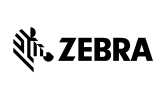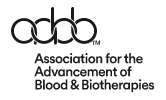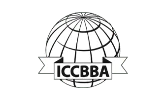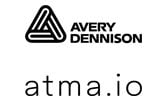Barcoding is helpful for the accurate tracking and identification of many items in the lab, but especially so for labware and other components that end up in kits. Here we’ll cover why a barcoding strategy is especially important for kitted labware items and provide a comparison between in-house and outsourced kitting strategies so you can decide which is the most suitable for your practice.
Why is barcoding especially important when it comes to kits?
In today’s healthcare environments, barcodes are necessary to accurately track samples and other items in the lab.
This is especially true for kits since all components in a kit need a common identifier to ensure all pieces can be traced to one another.
Sure, a text-only labeling system could suffice, but it’s far less efficient and leaves more room for error when employees must physically read and compare labels to find matching components. With a barcode system, pieces can be quickly scanned, and a correct reading is ensured.
A manual check can still be utilized even with a barcode system as a backup for added security.
With added efficiency and accuracy, utilizing a barcode strategy simplifies and adds integrity to your kits. Not only through simple scanning and accurate reads on individual items—but because these two benefits combine to allow for faster, more accurate kit preparation. Additionally, a barcode system provides a user-friendly experience for end users to prevent component separation later on during processing.
Barcoding & kitting in-house
If you’re currently barcoding and preparing kits of labware, you’re likely doing it in-house. In-house preparation is the standard, and there are a few reasons for this. For some facilities it’s a force of habit—since receiving your barcoded labware pre-kitted is relatively new, many facilities haven’t gotten around to trying it or didn’t know it was an option.
For other facilities, the idea of being in control of the process from start to finish is appealing, and so is the ability to include time-sensitive information.
What you’re likely doing is either printing your own label sets in-house or ordering pre-printed labels, sorting labware pieces into respective kits and applying labels with matching identifiers to each kit component before packaging—and the packaging will likely include a matching identifier as well! Alternatively, you may be ordering pre-barcoded labware. Then, the in-house task becomes more a matter of matching pieces of labware with other pieces sharing the same identifier before packaging them into kits.
Either way, employees are spending time sorting out labware into kits and ensuring each component shares an identifier before the kit is packaged—time they could be spending on tasks more valuable to your mission.
As we suggested, this option is often employed for one of four reasons:
1. This is how your facility has always prepared kits and it gets the job done, so why make a change?
2. You never considered there is another option.
3. Control and monitoring of processes from start to finish is incredibly important to your facility.
4. Time-sensitive information that isn’t available until shortly before labels are prepared is necessary in the preparation of your kits.
While in-house kitting has its merits, we typically recommend this method in situations where required information isn’t accessible until the time of kitting—since time sensitive variable information can’t be accommodated through outsourcing.
Outsourced barcoding & kitting
Another—lesser known—option is to outsource your kit preparation. With this option your kits will be sorted and packaged as they would be in house, however, instead of relying on your own labor force—your supplier will take charge of preparation.
Since in most cases kitting is an extension of an existing line of laboratory products, or performed by companies who solely prepare kits for laboratory use—most suppliers in this space are familiar with the importance of urgency and accuracy to customers in the healthcare industry.
Finding one you trust who can meet your most specific needs and standards should be your goal when seeking out this type of service. This brings us to the fact that not all services look the same—here’s a very general rundown of the major options in this space:
Stock kits
Some suppliers will stock generic labware kits. If you find a kit with everything you need then stock kits might be a valuable choice for you—especially if you’re in a rush. These kits can sometimes be purchased pre-filled with chemical compounds and properly stored to preserve integrity. The main limitation with purchasing generic kits is when it comes to labeling.
These kits and their components will typically include a generic barcode with a simple sequential numbering system. While this is enough for some, others might be looking for something more when it comes to labeling—these customers might end up adding secondary labels or they could benefit from something like our next option.
Custom kits
Some suppliers provide customization options, allowing you to choose kit components or additional labeling choices. At Computype, we offer a unique approach to custom kitting and packaging as part of our pre-labeled barcoding program. Let’s take a moment to explain how our offering sets us apart from traditional kitting services and offers enhanced customization.
Introducing our Labware Prep Services program, where we collaborate with leading labware suppliers to provide custom barcode solutions. Customize your experience with options like personalized barcode sequencing, advanced marking technologies, and, of course, tailored sorting, kitting, and packaging. Enhance your kits by adding components such as user instructions or swabs.
So who do we recommend outsourcing custom kit assembly to?
Outsourcing can offer value to almost any lab utilizing kits that is looking for process enhancement, however, we feel the following groups will benefit most:
1. Those experiencing unexpected and/or temporary boosts in demand
2. Labs concerned with boosting productivity in more value-added areas
3. Facilities where standard marking technologies just don’t cut it
4. Those with sequence management concerns
5. Those experiencing increases in demand &/or a sense of urgency in preparing large volumes
Unfortunately, there is one group that can’t adopt an outsourcing strategy, and that brings us to the biggest downside of outsourcing—your partner can’t include information on the spot. If you must include information on your labels that isn’t available until kit preparation your supplier will have a difficult time accommodating it since it’s most likely they’ll request all necessary data at the time of ordering.
In addition to the inability to include time-sensitive data, some facilities prefer to have a high level of control over their processes from start to finish. While outsourcing may still offer them great value, the increased sense of control offered by keeping processes in-house may bring valuable peace of mind.
A proper barcoding and preparation strategy is critical for kitted labware items to preserve sample integrity throughout processing—and we hope this blog helped you understand why. We also feel it’s important to mention outsourcing as a kitting option as it’s often left out of the conversation but can offer a lot of value to the right facility.












